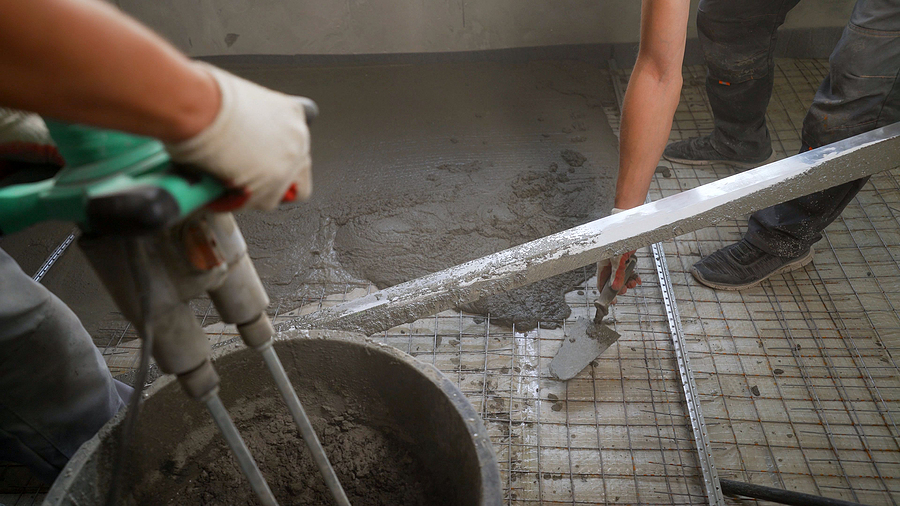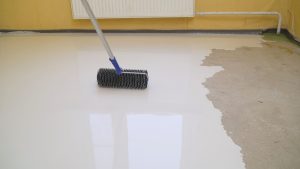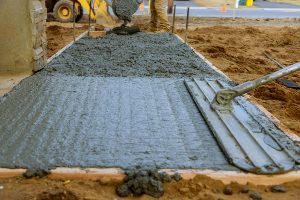Uneven, rough, or tired-looking concrete can make a space feel unfinished fast. The tricky part is deciding what fix you actually need. Do you smooth it or level it? Understanding the differences between concrete smoothing and leveling helps you pick the right approach, budget correctly, and avoid surprises later.
First, What’s the Goal?
If your surface is flat enough but looks or feels rough, think trowel marks, small ripples, shallow pits, or light spalling, you’re a candidate for smoothing. If the slab is out of plane, one side is higher than the other, noticeable dips, birdbaths, or a consistent slope where you don’t want one, you need leveling. That’s the heart of concrete leveling vs smoothing: smoothing corrects texture; leveling corrects height.
What “Smoothing” Actually Does
Smoothing is about refining the top layer so it’s pleasant underfoot and ready for finishes. Common options include mechanical grinding/polishing, skim coats, and polymer-modified resurfacer overlays. Grinding removes high micro-peaks and opens the surface so coatings bond better. Skim coats and resurfacers fill tiny imperfections, feather edges, and create a uniform canvas for paint, stain, epoxy, tile, or outdoor rugs.
Smoothing won’t fix a slab that’s significantly out of level. It also won’t resolve structural issues like settlement cracks or heaving. Think of it like finishing drywall: you’re perfecting the face, not rebuilding the wall.
What “Leveling” Actually Does
Leveling changes the elevation across the slab to bring it into plane. Indoors, installers often use self-leveling underlayments (SLUs). These flowable cements seek their own level, flattening dips before you install flooring such as LVP, tile, or engineered wood. Outdoors or with sunken slabs, contractors may lift panels via slabjacking (traditional cementitious “mudjacking”) or high-density polyurethane foam injection. Both methods raise settled concrete, close trip edges, and reduce ponding.
Leveling addresses function first. It can make doors swing freely, appliances sit straight, and water drains correctly. After leveling, you may still choose a smoothing pass for appearance, but you’ve fixed the foundation of the problem—the plane of the surface.
Tolerance and Cases
Your “flat enough” standard depends on how you’ll use the area. A garage or patio can tolerate slight waves. A kitchen expecting large-format tile needs tight tolerances or you’ll fight lippage. For epoxy floors, both level and smooth matter: you want the slab flat so coatings don’t “telegraph” dips, and smooth so the finish reads glassy and even.
If you’re installing drainage-sensitive features, like doors with tight thresholds or areas prone to pooling, prioritize leveling. If you’re simply refreshing a patio or prepping for stain, smoothing may be all you need.
Tools, Materials, and Cure Times
Smoothing with grinders or polishers produces dust (or slurry with water-fed tools), so proper containment matters. Skim coats and resurfacers typically allow light foot traffic within hours, full service within a day or two. Leveling with SLUs sets quickly but demands careful priming, mixing, and timing. Foam lifting is fast—many spaces are usable the same day—while traditional mudjacking may need a longer cure and leaves larger injection holes.
Durability and Maintenance
A properly smoothed surface with a quality sealer resists dusting, stains, and freeze-thaw scuffing. It’s easy to sweep and hose down. Leveled slabs prevent trip hazards and reduce edge stress that leads to cracking. However, remember that leveling addresses existing elevation problems; it can’t stop future movement caused by poor subgrade, drainage issues, or expansive soils. Fix sources of moisture and runoff to protect your investment.
Cost Drivers
Smoothing costs hinge on square footage, severity of surface defects, and whether you want a basic resurface or multi-stage grind-and-polish. Leveling costs depend on how out-of-level the slab is, the method (SLU vs. slabjacking vs. foam), access, and required thickness. A small feathered skim is typically less than rebuilding a plane across a whole room. Conversely, lifting a few settled patio panels can be more affordable than demolition and replacement.
DIY or Pro?
Light cosmetic smoothing, cleaning, etching, and applying a thin resurfacer is within reach for careful DIYers. Leveling is less forgiving. SLUs demand tight prep, correct priming, and quick, consistent pours. Lifting panels requires specialized gear and an experienced hand to avoid over-correction or cracking. If your project involves thresholds, drains, or structural cracks, consider hiring a professional for an on-site assessment.
Quick Decision Guide
Ask yourself: Is the primary issue texture or elevation? If it’s texture, minor roughness, or light pitting, choose smoothing. If it’s elevation, noticeable dips, trip edges, or slope, choose leveling. When in doubt, level first to correct function, then smooth for finish.
The Bottom Line
The differences between concrete smoothing and leveling primarily stem from their respective purposes. Smoothing perfects the surface you see and feel. Leveling restores the plane you rely on for drainage, safety, and proper installation of finishes. Get the diagnosis right and your patio, garage, or interior slab will look better, perform better, and last longer.
If you’d like help deciding between concrete leveling vs smoothing for your space, schedule a quick site review. We’ll evaluate your slab, explain options, and map the shortest path to a flat, great-looking finish. Transform your slab into a showpiece. Request your on-site assessment & custom quote today.



